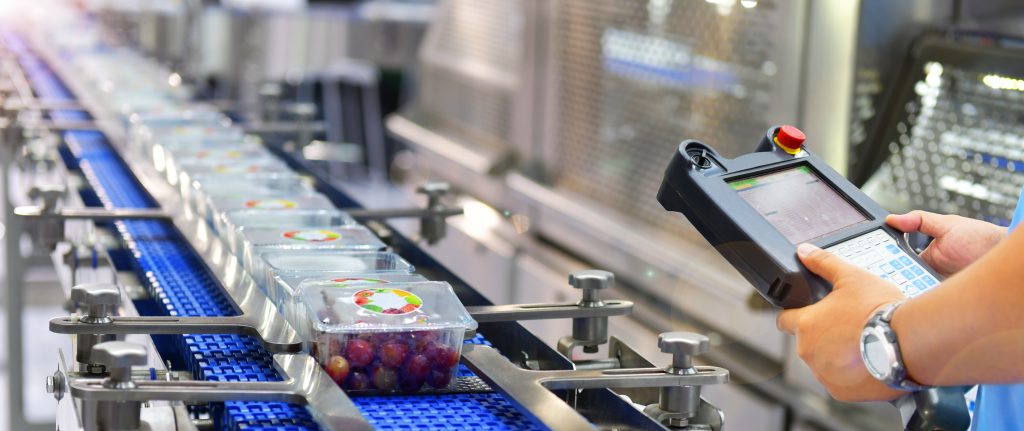
Shifts in food manufacturing often mirror consumer trends, but they typically reflect technological advancements, too. Here are four things worth watching beyond 2023.
Freshness Sensors for Food Packaging
Anyone who regularly shops for groceries knows the importance of looking for use or sell-by dates on perishable items before tossing them into a cart. Unfortunately, that method often leads to food waste because people throw away things that are still okay to consume, but are out of date.
Researchers are working on freshness sensors to replace printed dates. One option features Velcro-like material that makes tiny perforations in plastic packaging. It can detect bacteria that indicates the food is contaminated or too out of date to eat. Another possibility tracks the CO2 levels in pork packages and changes color to tell if a product is fresh or not.
It may be a while before these sensors become widespread. However, if they do, the benefits could reach consumers and manufacturers alike. People purchasing the items can feel more confident about food freshness and not worry about checking date stamps. Makers of the products may discover that they stay safe to eat a lot longer than previously thought, thereby making them more attractive to purchase.
Now is an excellent time for food manufacturing professionals to commit to staying abreast of possible sensor styles and how they could integrate into future packages. Companies will then be in better positions to respond as these solutions gain traction.
Demand for Functional Foods and Beverages
Consumers no longer merely prioritize food that tastes good. They also want products that help them stay healthy, causing a boom for so-called functional foods and beverages. These products do not cure disease, but they feature modifications that claim to improve well-being. For example, you might see more immune system-boosting drinks or yogurts that promote better digestion.
According to a market research report, the functional foods market will see a combined annual growth rate of 6.7% from 2021-2027. Analysts predicted that baked goods, dairy products and consumables with probiotics would be among the specific product categories to grow the most during the forecast timeline. Moreover, items that promote heart health should see an increase in demand.
Additionally, an April 2020 survey revealed that 48% choose such foods for “general insurance” reasons stemming from feeling like they should. About 46% reported seeking a specific benefit or result. COVID-19 also factored into decisions since 29% said they consumed functional foods and beverages more often due to the pandemic.
Food manufacturers will also need to make smart packaging decisions for these items. For example, when marketing a product to runners, using flip-top caps or easy-to-tear packages is wise because it lets consumers enjoy the food or drink while exercising.
Package and Label Information Playing a Larger Role
Supermarkets carried more than 33,000 products on average in 2019. Consumers increasingly decide what to buy based on whether the label indicates a product is good for them. Many expand their preferences and prioritize items that help the planet or purchase items from companies known to treat their workers well.
The package and label information offer a quick, reliable way to gauge an item’s characteristics. For example, they might see a fair trade label or notice that a product has 25% less fat or salt than an earlier variety.
People will likely start paying attention to added sugars, too. At the beginning of 2020, companies with at least $10 million in annual sales had to start listing added sugars on their labels. As a result, dairy companies and others are tackling the daunting challenge of either reducing the sugar content or finding a substitute. Since all sweeteners taste different and have various functional attributes, picking the right ones can be a time-consuming exercise.
This trend poses a two-prong challenge for food manufacturers. First, they must create products most people perceive as healthy or at least a permitted indulgence. Next, the goal is to design the packaging — and the food itself when applicable — to capture attention on shelves while offering consumers the details they need and want.
Convenient, Affordable Offerings
Most people had to do things differently in the height of the coronavirus pandemic. Research indicates that many will continue to select and prepare food in a new way due to their experiences during COVID-19. A study about people’s preferences since the pandemic started highlighted that 37.9% of those polled desired real food made with natural and simple ingredients, plus fewer additives. Another 34.5% of people wanted items to support well-being.
The results showed that they also looked for complete solutions rather than single products. For example, people want quick, healthy meals that please the whole family and leave more time for togetherness. They also appreciate dinner kits for similar reasons. As households spend more time at home instead of eating out, they especially look for options that taste great and offer fun and connectedness that people get when eating elsewhere.
However, food shoppers still expect reasonable prices for these perks. The report’s authors expect consumers’ existing price consciousness to increase. Even so, people are willing to buy premium products when they help recreate the experiences that COVID-19 makes them miss.
Brand representatives must continue putting themselves in consumers’ positions when developing or marketing new foods. What ingredients or processing methods will help foods taste delicious even if people hate cooking or think they’re bad at it? Which steps in the manufacturing process cut down the preparation necessities a purchaser must do? Maintaining a customer-centric mindset helps products succeed.
Patterns to Shape Future Decisions
It’s impossible to predict the future with certainty. However, these food manufacturing trends give valuable clues into what manufacturers should expect — and how they should prepare — to have the best chance of pleasing customers and boosting profits.
